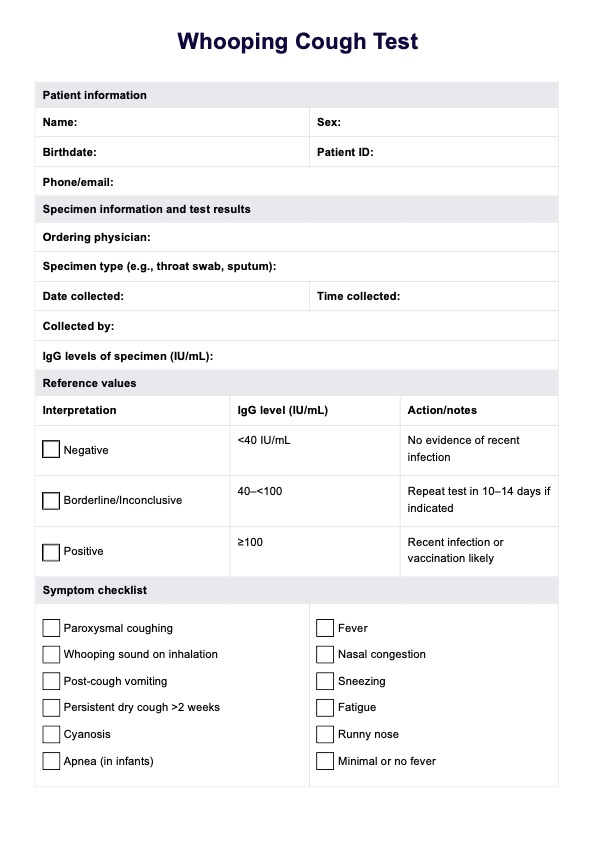Healthcare providers typically request a whooping cough test when a patient presents symptoms consistent with the disease.

Discover the latest updates on Whooping Cough Test methods, including PCR testing for accurate diagnosis and prompt treatment of pertussis. Stay informed, stay healthy.
Healthcare providers typically request a whooping cough test when a patient presents symptoms consistent with the disease.
Whooping Cough Tests are used when individuals show symptoms of whooping cough, especially in high-risk groups like infants and young children.
Whooping Cough Tests are used to confirm the presence of Bordetella pertussis, the bacterium causing whooping cough.
EHR and practice management software
*No credit card required
Free
$0/usd
Unlimited clients
Telehealth
1GB of storage
Client portal text
Automated billing and online payments